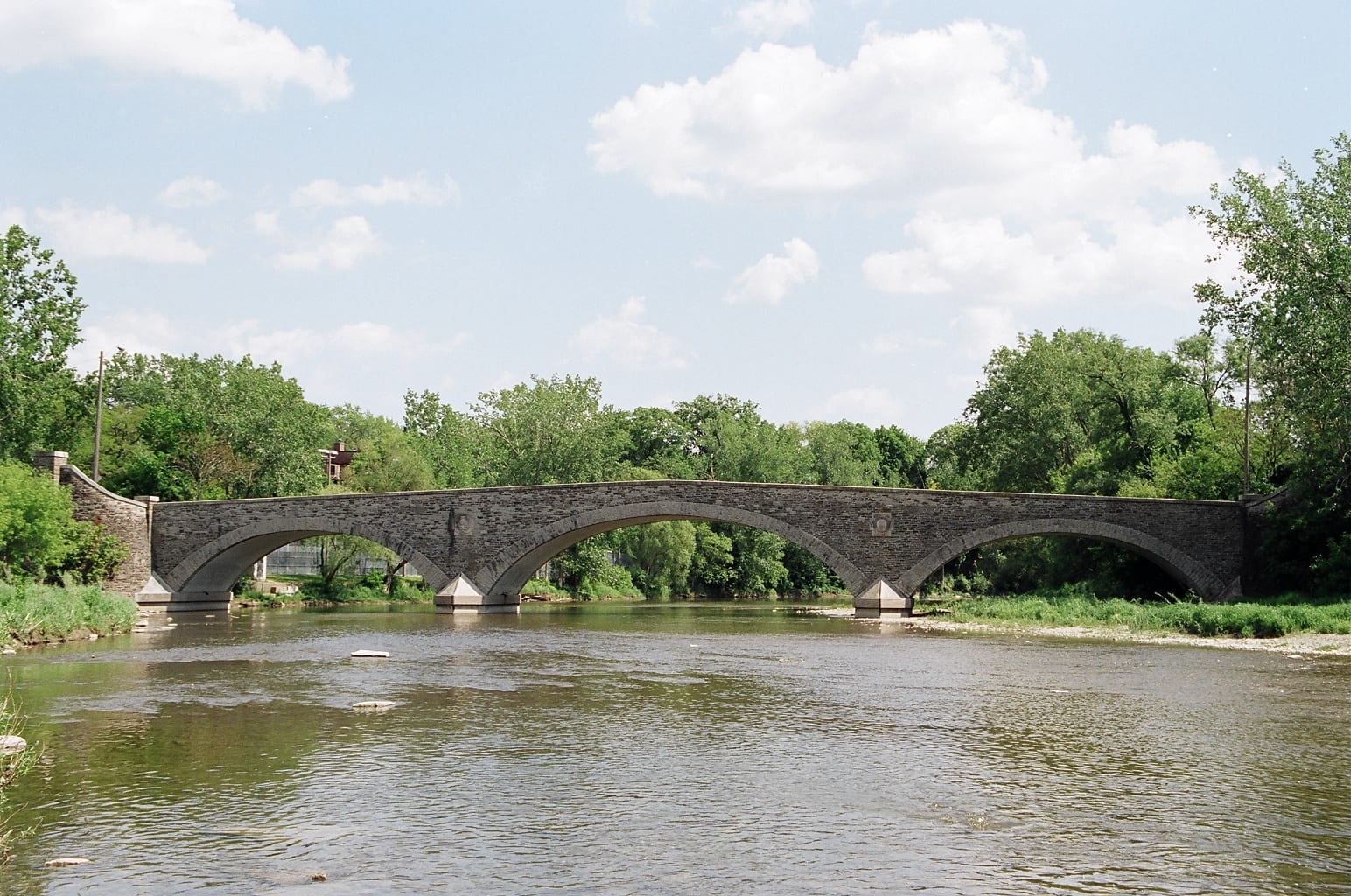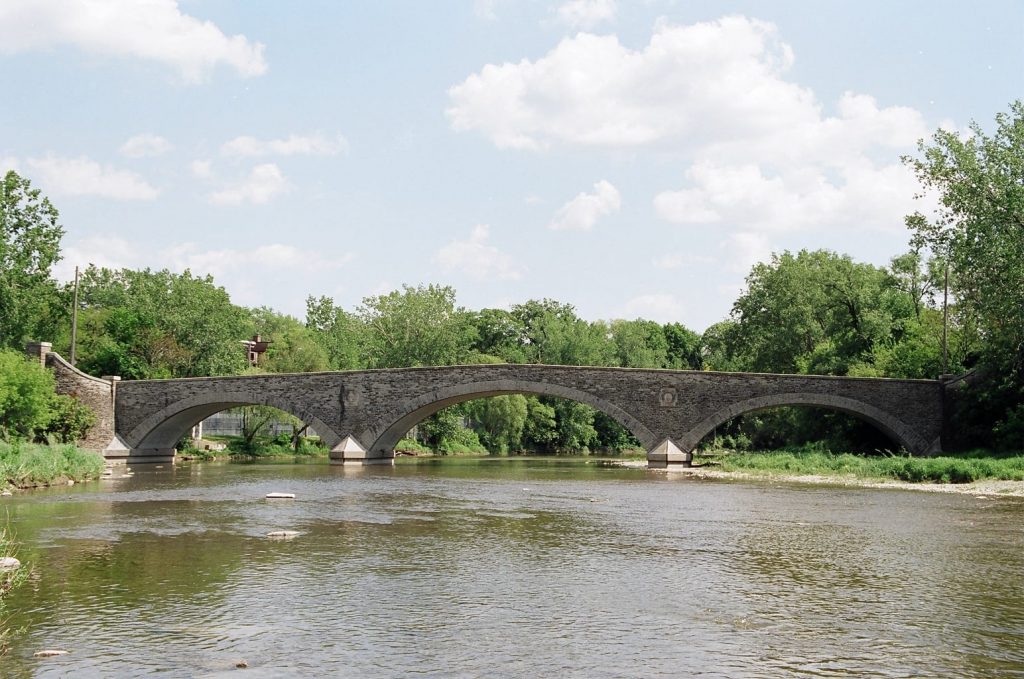Francophones in early Toronto: A little-known heritage


An obelisk at the site of Fort Rouillé, better known as Fort Toronto, at Exhibition Place near the downtown core, a few historic plaques in Étienne Brulé Park along the Humber River in the western part of the city, and a few mentions of the French period in the Fort York National Historic Site exhibitions testify to the historical heritage dating back to New France in Toronto. The contribution of these first European inhabitants to Toronto’s development deserves to be remembered.
To learn more…
Humber River: A Canadian Heritage River
The Humber River flows towards downtown Toronto from former suburb of Etobicoke, now part of the city. In 1999, the Canadian Heritage Rivers System designated Humber River a Heritage River because the Aboriginal peoples followed it for thousands of years to travel between Lake Ontario, Lake Simcoe and Georgian Bay, where the Hurons-Wendats lived. French explorers and fur traders also sailed the river in the 17th and 18th centuries. Étienne Brûlé was the first “White” to travel on what is now known as the Toronto Carrying Place Trail between Georgian Bay and Andastes country south of Lake Ontario in 1615. Explorer and founder of Quebec City Samuel de Champlain had sent the young man to live among the Huron-Wendat in 1610 to learn their language and customs. Étienne Brûlé is recognized today as the first Franco-Ontarian, and the park that borders the Humber River is named after him.
Historic plaques in Étienne Brûlé Park attest to the presence of Aboriginal villages, some thousands of years old, while others commemorate Étienne Brûlé himself and other French explorers, as well as the construction of two fur trading posts at the time of New France.
Forts Douville, Portneuf and Rouillé-Toronto
Although the French regularly visited the Great Lakes as early as the 1630s, they avoided Lake Ontario, which was controlled by the Iroquois, who were enemies of the French Aboriginal allies, and therefore enemies of the French. Although there was a peaceful period during which explorer Cavelier de La Salle and missionary Louis Hennepin reported meeting with the Iroquois, now in possession of the former Huron-Wendat Humber, or Kabechenong, River territory in 1675 and 1680, it was not until the 18th century that the French built their first trading post there.
In 1720, young Alexandre Daigneau Douville, whose family were fur traders, erected a modest fort at the place now known as Baby Point (in reference to James Baby, who settled there in 1815) on the Humber River, approximately five kilometres from Lake Ontario. The few French who lived there took Aboriginal wives in “country marriages.” However, there were not many furs, and the French abandoned the fort 10 years later.
In 1749, Pierre Robineau de Portneuf oversaw the construction of a new, larger fort at the mouth of the Humber River. The volume of furs traded was so large that a second fort was built 10 kilometres to the east in 1750–1751 to intercept Aboriginal traffic to the British trading post in Oswego on the south shore of Lake Ontario, five days by canoe futher east. This 29-square-metre French fort with a bastion at each of its four corners was named Fort Rouillé in honour of the Secretary of State for the Navy and the Colonies, Antoine Louis Rouillé, but it is better known as Fort Toronto, a name derived from an Aboriginal place name. Fort Toronto was abandoned and burned down by the French in 1759, when they withdrew to Montreal just before the surrender of New France to Great Britain. A commemorative obelisk was erected at the site of the fort in 1887.
Toronto’s Francophone historical heritage
In short, there are few signs in today’s Toronto of the founding role of these 17th and 18th century French explorers, traders and soldiers. Only a few plaques, the outline of Fort Rouillé on the ground around the commemorative obelisk and the information provided at Fort York mark their contribution. The name Toronto, which was first used by French fur traders and voyageurs who lived among the Aboriginal peoples and knew their language, can also be considered a legacy of the period, since the British colonial city of York was renamed Toronto in 1834. Jean-Baptiste Rousseaux, son of Montreal trader Jean-Bonaventure Rousseaux, who was granted the first licence to trade on the Humber River after the British Conquest, opened his home to the Lieutenant-Governor of Upper Canada, John Grave Simcoe, and interpreted for him when he came to grant York the status of capital of Upper Canada in 1793.





